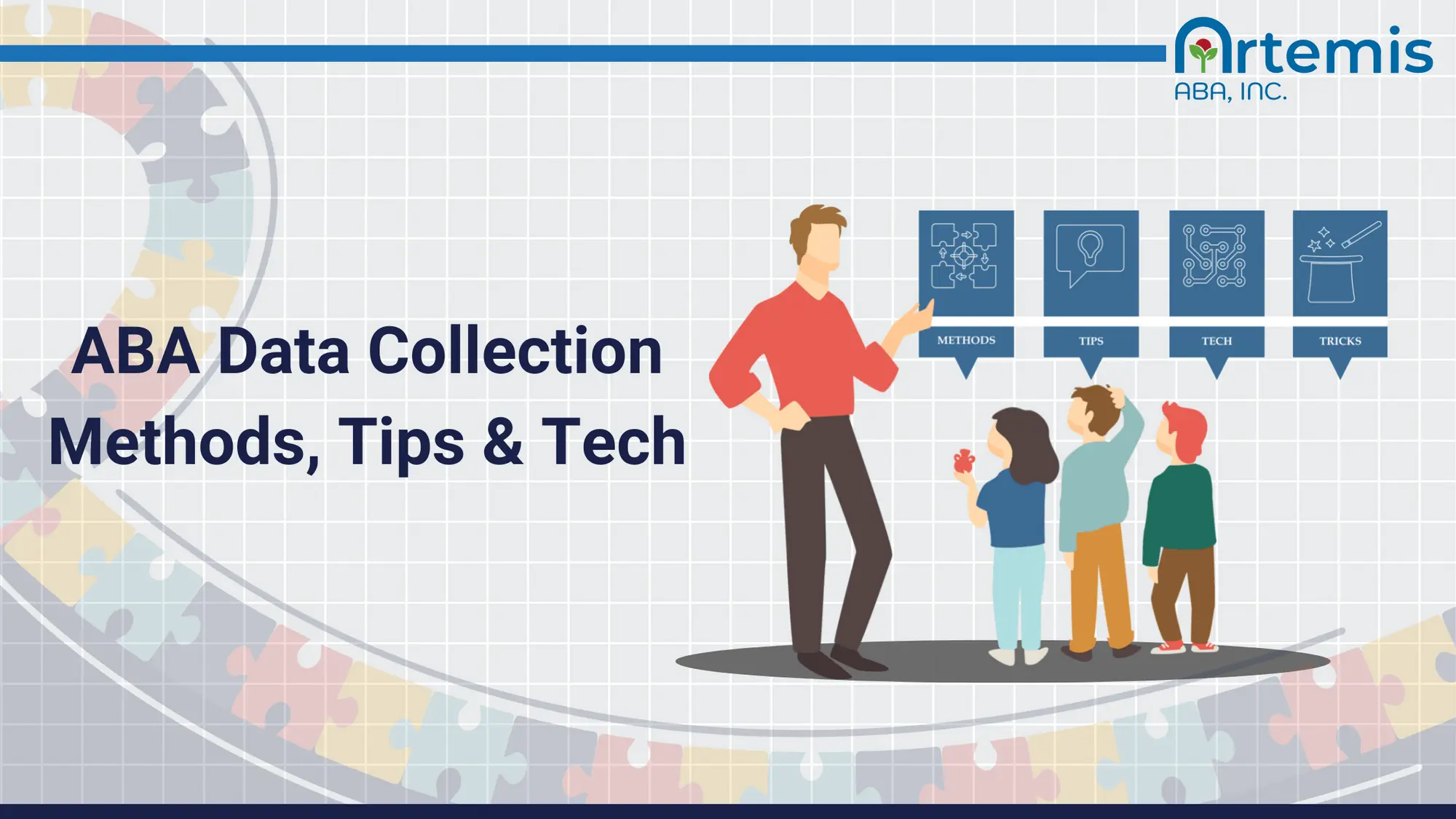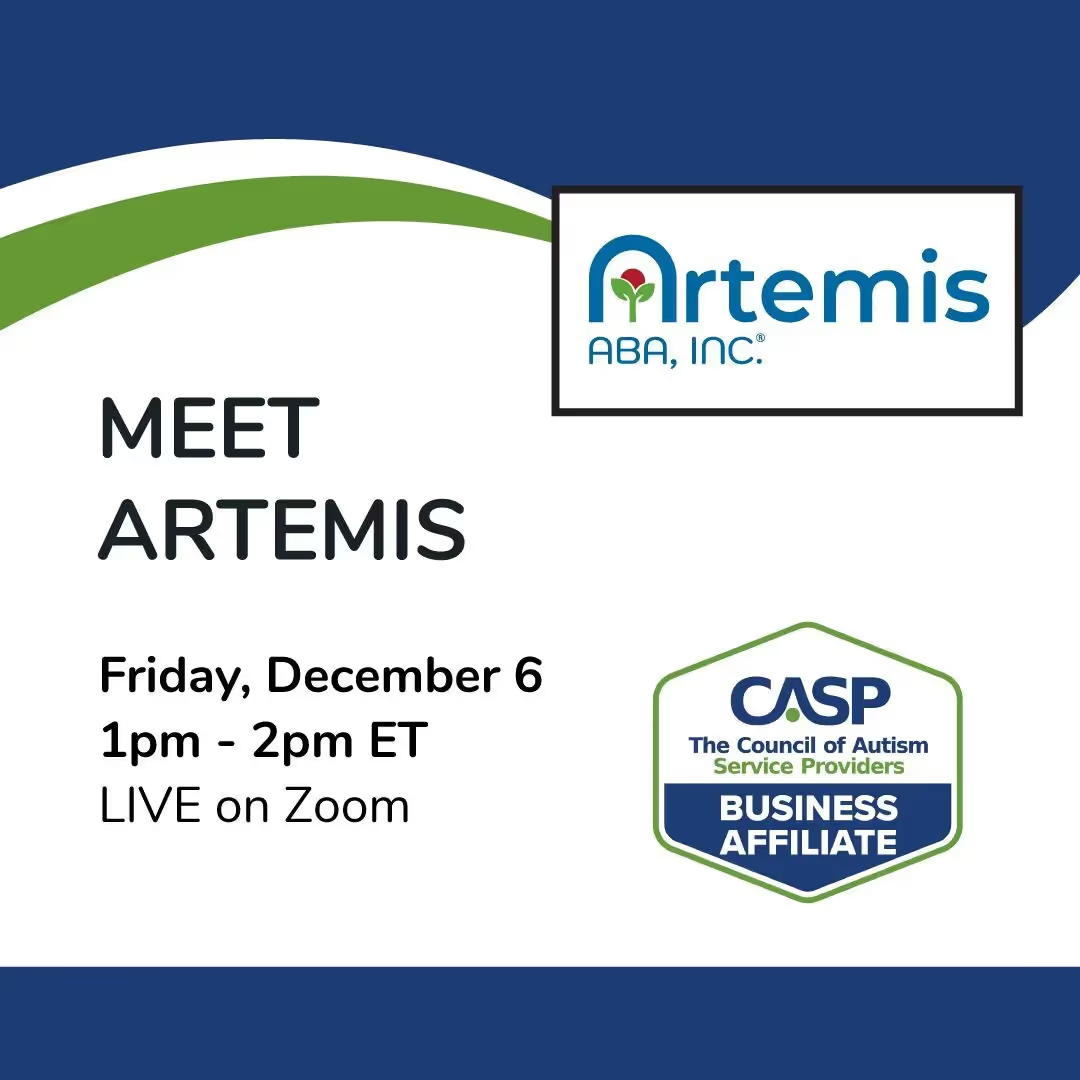Monday to Friday, 7 AM – 7 PM CST.
If you're reaching out outside these hours, please submit a support ticket—our team will respond as soon as possible.

ABA Data Collection: Methods, Tips & Tech
Mental health providers use applied behavior analysis (ABA) to help children with autism. This analysis relies on insightful data collection. We've gathered the pros and cons of various data collection methods, tips from expert and how technology can help.
In this article:
- Why data collection is so important
- Top ABA data collection methods
- Tips from ABA data collection experts
- How software can improve ABA data collection
What is ABA Data Collection?
Mental health providers use ABA data collection to record the behaviors of children with autism. ABA stands for applied behavior analysis. This therapy uses learning theory to improve social skills, so recording the child's behavior over time is essential.
For example, professionals might record instances of negative behaviors like aggression or tantrums. Or they might record instances of positive behaviors like completing a requested task. Providers have been conducting ABA data collection in some form for decades. For example, a 1977 study in the Journal of Applied Behavior Analysis examined 293 ABA research studies conducted from 1968 through 1975 and found that 76 percent used "data collected by the observation of human subject's behavior."
Continuous Vs. Discontinuous ABA Data Collection
ABA data collection comes in two types: continuous and discontinuous. Continuous collection means that health providers record all behaviors over long periods. Discontinuous collection means that it takes place in short periods. Professionals use it when continuous data collection isn't possible.
In general, continuous data collection more accurately measures and records behavior. A 2013 study published in the journal Research in Autism Spectrum Disorders, for example, compared continuous data recording to a discontinuous method called "time sampling" in analyzing ABA sessions with three children with autism spectrum disorders. The study found that continuous recording was more accurate than time sampling.
Still, discontinuous ABA data collection has real value. Providers use discontinuous ABA data collection frequently. They commonly use it when it isn't possible to directly observe an individual for a long period.

Here is how you can: Create an efficient ABA Practice with Artemis
Professionals may use different ABA data collection methods based on the situation. For example, one common method is frequency/event. It record show often a particular behavior occurs. Another method is duration recording, or how long the behavior occurs.
Here's a full list of the most common ABA data collection methods:
- Frequency/event: In this method, providers record the number of times an individual displays a behavior. This might be how often a child bites his pencil or bangs his fist against a table. The method can help providers understand how problematic a behavior is. It can also show how well treatment is working or not working.
- Rate: Providers often combine this method with the frequency/event method. For example, this method tracks certain behaviors within a certain time period -- in 10 minutes or an hour. They then establish the rate of occurrence or percent of occurrence per period.
- Duration recording: This method helps providers record how long a certain behavior lasts. In some cases, a goal of treatment may be to diminish the length of a behavior -- a temper tantrum, for example. Providers may also use this method for behaviors that are too fast and repetitive to measure in a frequency/event manner.
- Latency recording: Providers may want to measure how long it takes an individual to change their behavior based on a provider's request or cue. For example, they may want to record how long it takes a child to become quiet after the provider asks them to "quiet down." Latency recording measures that length of time.
- Permanent product: Permanent products are things that a child or the child's behavior may produce. That might include homework assignments or worksheets. Orit might consist of things like papers thrown on the floor or items left on a table after an activity. Providers may record this data as evidence after a behavior has occurred.
- ABC analysis (Antecedent-Behavior-Consequence): This method tries to track the cause of behaviors and their effects. The provider tries to determine an antecedent before a behavior or something that happens before a behavior. The provider then also tracks the behavior and events that occur immediately following. All of this can help providers develop treatment plans.
- Scatterplot analytics: This data collection method helps providers draw correlations between a behavior and when during the day it occurs. Does the provider want to determine whether temper tantrums are more likely to happen in the morning, afternoon or evening? They might use a scatterplot to try to determine that. Scatterplots divide a period into small time blocks -- like 15-minute blocks, for instance. Providers then record in the appropriate time block when a behavior occurs.
- Interval recording: This method keeps track of whether a behavior occurred during a defined period. The provider sets a specific time and observes whether a behavior has happened during that period. This method can be helpful when a provider can't watch an individual for an extended period. The two types of interval recording are whole and partial:
- Whole interval recording: With this method, the provider records whether the behavior occurred during the entire interval. For example, is a student reading a book during the whole 20-minute interval?
- Partial interval recording: With this method, the provider watches and records whether an action took place in the period. For example, did the individual tug on his hair during the time period?
- Time sampling recording: This method is a variation of interval recording. Providers might use this to focus on a large group of students or individuals. With this method, providers split a larger chunk of time (for example, 60 minutes) into smaller chunks of time (for example, two minutes). With this method, provider scan then track the behavior of each individual -- for a short time -- within the larger group.
- Momentary time sampling recording: This method is a form of time sampling. In this method, the provider assesses whether a behavior occurs at the end of a time interval. For example, is a student still reading at the end of a 10-minute interval?
- Rating scale data: In this method, providers use a rating scale to assess a behavior. For example, they may rate an individual on her independence in working on a task or his compliance with participating in an activity. Providers then record and graph those ratings over time. They might use the rating to watch for any improvements or declines.
- Per opportunity recording: This method records whether a certain behavior happens when an opportunity arises for it to occur. For example, does an individual answer a question correctly when a teacher asks? In this method, a provider might record "percent of occurrence." That details the rate or percentage of time a child answers a question accurately or appropriately.
- Task analysis: In this method, providers assess and record how an individual does on an assigned task-- like putting on a coat or making a sandwich. Providers use the method to measure progress on the task over time.

Experts recommend several important tips for good data collection. Those tips include determining the appropriate data to collect and understanding each method's limitations. Providers must also make changes to treatment when the data shows that they should.
Here are some data collection tips from experts:
- Decide the type of data you need to collect and use an appropriate data collection method.
The best data collection method will depend on a child's treatment plan and the behaviors observers want to track. Make sure you understand the methods that will best track those behaviors.
- Understand the inherent errors in some data collection methods.
Some data collection methods are useful in some situations, even when they may be less accurate than other methods. Providers may need to use some discontinuous data collection methods, for example, when they are trying to observe and track behaviors in many children at the same time. But providers must understand the limitations of those methods.
A study in the journal Behavior Analysis in Practice points out, for example, that partial interval recording "will consistently overestimate the true occurrence of a behavior, since both a 1-(second) response and a 9-(second) response in each 10-(second) interval are coded identically as an occurrence." On the other hand, the study points out, whole interval recording will underestimate the true occurrence of a behavior. That's because an observer must code behavior that lasts five seconds in an interval of 10 seconds as a non-occurrence -- because the behavior did not happen for the full 10 seconds.
- Prepare your materials and tools.
Providers and observers must have all their data collection and recording materials easily available to them while observing the child. That might include pencil and paper and notebooks, or laptops or tablets that might include data collection software.
- Measure exact behavior without prompting or help.
A provider observing and recording whether a child is taking steps to tie his shoes independently must record accurately what the child is doing. So, the provider can't register the child as taking all the necessary steps if the provider needs to help the child in any part of the process. Of course, the provider may want to be encouraging. But recording behavior less than accurately ultimately doesn't serve the child; it doesn't accurately measure whether or how much the treatment plan is helping. (To check the accuracy of measurement, providers may sometimes use a concept called the interobserver agreement, or IOA, to check the accuracy of their measurements. IOA uses two or more observers to record and report data after observing the same events.)
- Pay attention to what the data is telling you and make needed changes quickly.
Providers must assess what the collected data tells them about a child's behavior and how the treatment is helping or not helping. When the data indicates the therapy seems not to be helping or progress is slowing, the provider must quickly make changes in the treatment plan
How to Choose the Right ABA Data Collection Method for Your Needs
Providers should consider several factors in choosing the right data collection method for their situation. They will especially want to consider the type and frequency of behavior they're trying to measure.
It's difficult for providers to measure behaviors with a very high rate with some methods. And it's difficult for providers to measure infrequent behaviors with other methods. Some methods are also better for measuring behaviors providers want to increase, while others are better for measuring behaviors providers wish to decrease.
You can learn more about choosing the right data collection method for your situation with the following chart.
Do you need professional help in ABA data collection?
How to Choose the Best ABA Data Collection Method

Providers have used simple paper and pencil to do data collection for years. But new data collection software and technology offer many advantages for collecting good ABA data.
Practice management software allows for almost immediate analysis of data, for example. Aboard-certified behavior analyst, or BCBA, will assess data collected by a behavior therapist to help determine whether to adjust a treatment plan. With traditional data collection tools like pencil and paper, the BCBA must pore over the therapist's paper records and may be able to analyze the data only every one or two weeks. But a BCBA can almost immediately analyze data that the therapist collects through software and uploads online.
The software allows providers to show parents any progress in a child's treatment more easily. It also allows providers to provide evidence of treatment to health insurance companies, which require that evidence for payment.
In addition, the software allows providers to transfer a child's data to other providers more easily.
Without good data collection software, "it's very difficult, when you go from one provider to the next, to compare any meaningful results. Because the way they're recording the data, it's so different," says Vrtis. "What happens, ultimately, is the client suffers."
ArtemisABA: Comprehensive Data Collection
ArtemisABA's practice management solution offers ABA providers an integrated system that allows them to collect various ABA data with unmatched comprehensiveness. For example, the software enables providers to capture session notes and signatures in one cloud-based solution easily. It allows providers to adjust the software to meet their unique practice needs. And it integrates all of that data collection into a complete system that provides tools for scheduling, billing and other business services.
Schedule Your Walkthrough
Please enter your details and one of our team members will contact you shortly
See Artemis in Action
Enter your information below












%201.webp)


